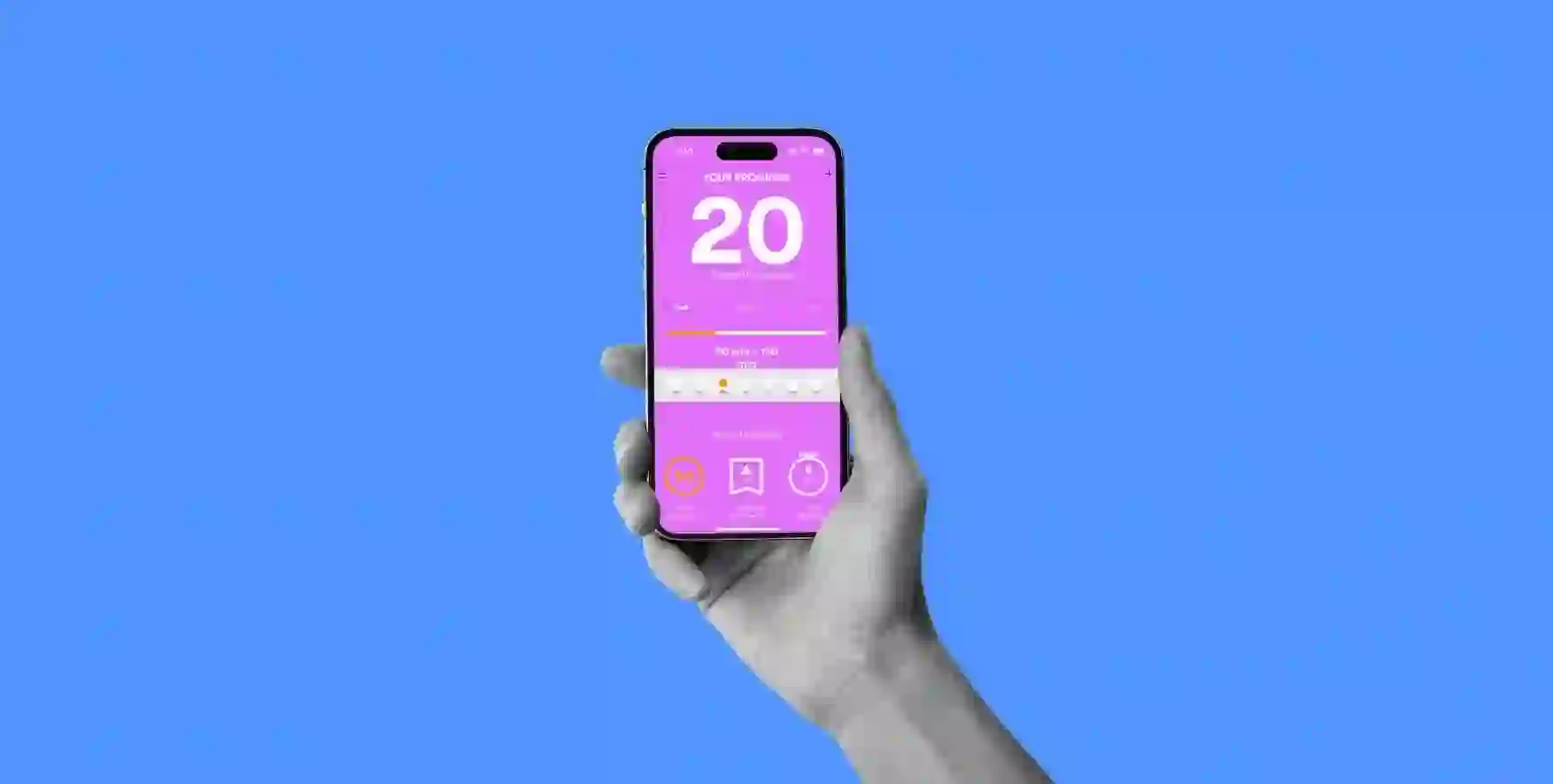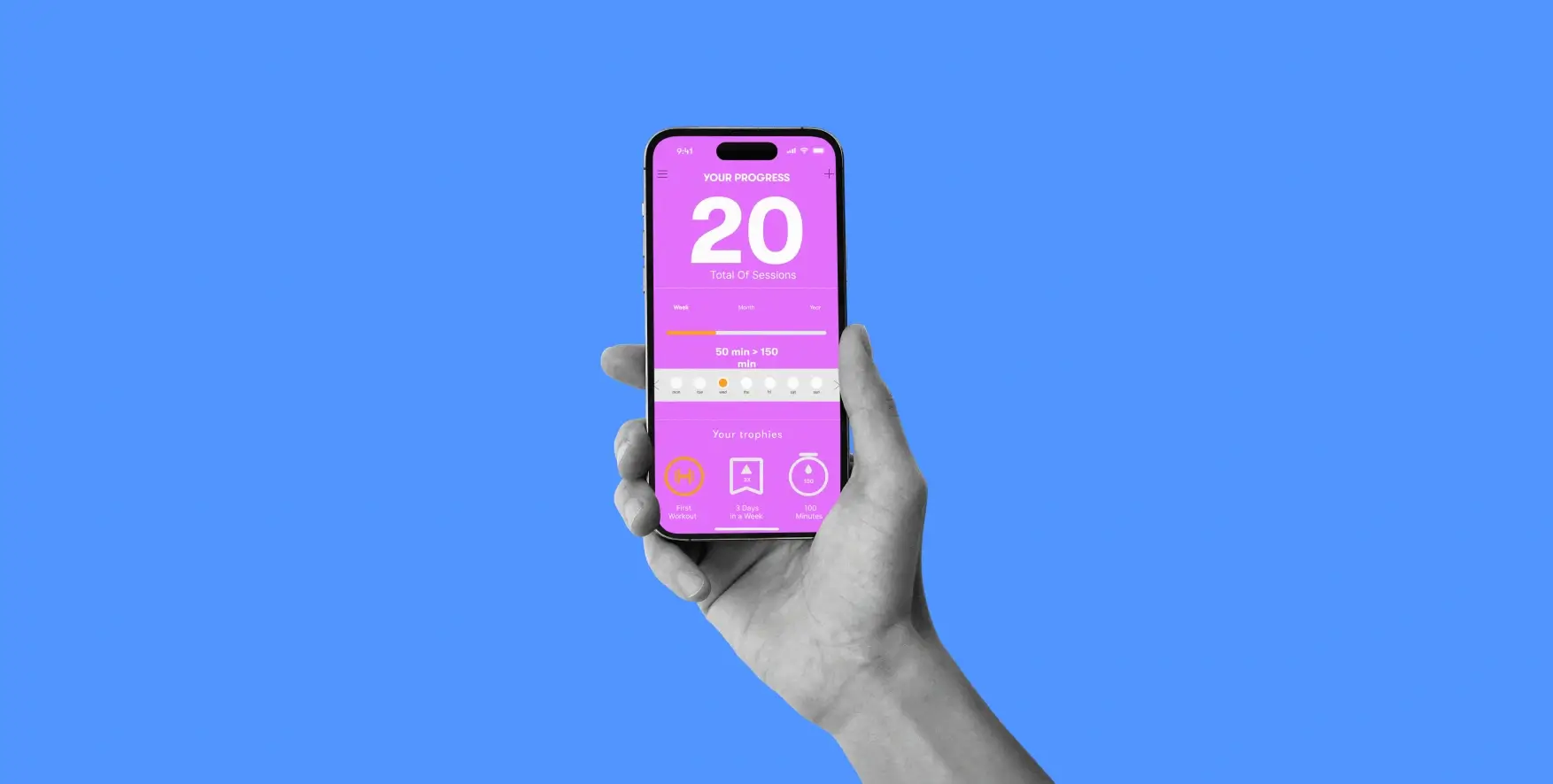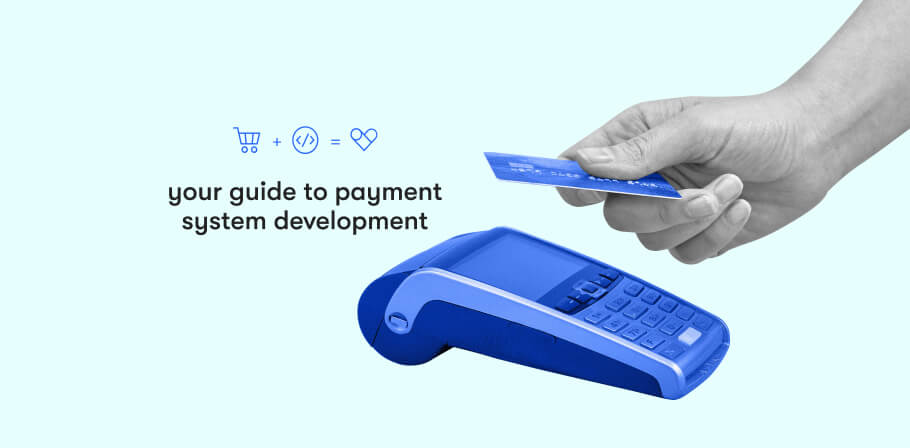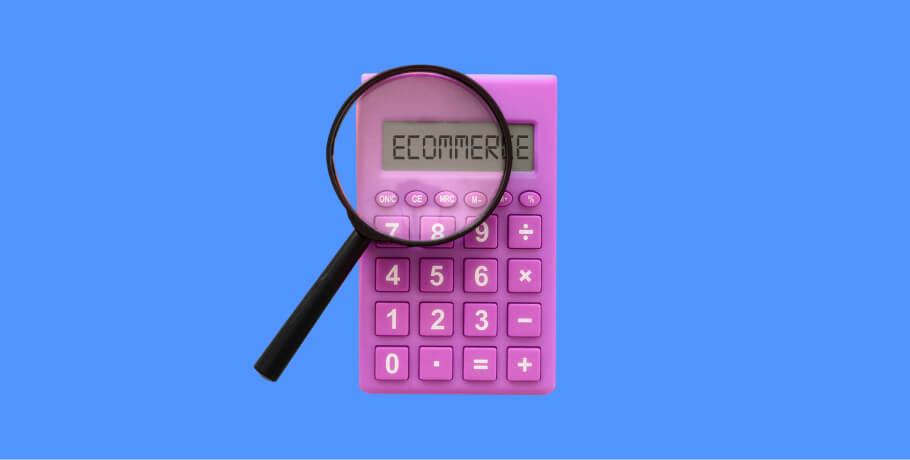Technology has become a trusted companion on the journey to a healthier lifestyle. Fitness apps have emerged as powerful tools to help individuals achieve their wellness goals, making it more accessible and convenient to monitor, plan, and maintain their physical well-being. If you're eager to tap into the vast potential of the fitness app market and wondering how to make a fitness app that stands out, you've come to the right place.
This guide will walk you through the fitness app development process step by step as part of the broader discipline of healthcare software development. Whether your vision is to create a comprehensive health and wellness app, build a workout app for a specific fitness niche, or you're simply curious about how to start a fitness app, we'll cover everything you need to know. From understanding your target audience and setting your project's goals to choosing the right features and launching your app, this journey will equip you with the knowledge and insights to make your fitness app vision a reality.
The growth of the fitness app market
The fitness app market has experienced remarkable growth, driven by various factors. Let's start by examining the reasons behind this expansion before delving into the numbers that illustrate the market's robust performance.
- The growing emphasis on health and wellness: The last decade has witnessed a significant shift in people's attitudes towards health and fitness. More individuals are becoming aware of the importance of staying fit and maintaining a healthy lifestyle. This cultural shift has paved the way for creating more fitness apps, as it caters to the increasing demand for tools that facilitate fitness and wellness routines.
- Technological advancements: With the increasing penetration of smartphones and the availability of wearable fitness devices, technology has become an integral part of our lives. Fitness app development has leveraged these technological advancements to provide users with personalized fitness experiences, real-time tracking, and interactive workouts. The synergy between technology and fitness has been a driving force behind the growth of this industry.
- Convenience and accessibility: Fitness apps offer users the convenience of working out at their own pace and schedule. These apps guide users at every fitness level, from beginners to seasoned athletes, making it easier for anyone to lead a healthy lifestyle. This accessibility factor has significantly contributed to the popularity of fitness applications.
- Pandemic acceleration: The COVID-19 pandemic further accelerated the adoption of fitness apps. With gym closures and social distancing measures in place, people turned to fitness apps as a means to stay active and healthy from the safety of their homes. This surge in demand led to more fitness apps and innovation in the sector.
Now, let's take a look at some figures and trends to understand the extent of the fitness app market's growth.
The global fitness app market has experienced substantial growth, with revenues consistently increasing. According to Statista, in 2024, the market is projected to reach US$6.86bn. This figure is expected to grow to US$10.04 by 2028 at a CAGR of 9.99%. This rapid expansion illustrates the increasing popularity of fitness applications.
The number of fitness app users has also surged. By 2030, paid fitness app memberships are expected to reach 230 million worldwide. As people become more health-conscious, fitness app development is focused on attracting and retaining a larger user base.
SEIZE THIS MARKET OPPORTUNITY WITH YOUR FITNESS APP
Get our team onboard to create your competitive fitness application. Full-cycle product development and consulting included.
Fitness app types
The fitness app market can be segmented into various categories, including workout and exercise apps, diet and nutrition apps, and wellness apps. Each of these segments has experienced growth, with workout and exercise apps being the most popular among users.
Various types of applications cater to the diverse needs and preferences of health-conscious individuals. These fitness apps can be categorized into several distinct types, each serving a specific purpose. Below, we provide an overview of the various fitness app types in a tabular format:
| Type | Description | Examples |
| Activity tracking apps | These apps focus on monitoring and recording physical activities, such as steps taken, distance covered, and calories burned. They often utilize the device's sensors to track movement. | Fitbit, Apple Health, Google Fit |
| Workout apps | Workout apps are designed to guide users through exercise routines and training regimens. They offer various workout plans, video demonstrations, and progress-tracking features. | Nike Training Club, MyFitnessPal, StrongLifts |
| Smart coach apps | Smart coach apps provide personalized coaching and training recommendations based on user data and goals. They may use artificial intelligence to adapt routines over time. | Freeletics, JEFIT, 8fit |
| Diet and nutrition apps | These apps assist users in managing their diet, tracking calorie intake, and providing nutritional information. They often include meal planning and recipe features. | MyPlate, MyFitnessPal, Cronometer |
| Meditation apps | Meditation apps aim to improve mental and emotional well-being. They offer guided meditation sessions, stress relief techniques, and mindfulness exercises. | Headspace, Calm, Insight Timer |
| Yoga apps | Yoga apps are specifically tailored for yoga enthusiasts. They provide video tutorials, guided yoga classes, and pose libraries to help users practice yoga at home or on the go. | Daily Yoga, Yoga for Beginners, Asana Rebel |
| Move-to-earn apps | These innovative fitness apps incentivize physical activity by rewarding users with virtual currency, discounts, or other incentives for completing specific challenges or achieving activity goals. | Sweatcoin, Achievement, EarthMiles |
Features of a fitness app
When it comes to developing a fitness app, there are several essential features that any successful application should include. These must-have features are the foundation of a great fitness app, ensuring that it provides users with a comprehensive and engaging experience. Additionally, the specific features you choose to include can depend on the type of fitness app you're developing, tailoring the app to your target audience's needs and preferences.
Must-have features
Authorization
Authorization is the gateway to your fitness app. Users should be able to create accounts, log in, and securely manage their personal information. Ensuring a smooth and secure authorization process is crucial for building trust with your users.
User profile
A user profile is where individuals can input and update their personal information, including age, weight, height, fitness goals, and exercise preferences. This information is essential for personalizing the fitness experience and tracking progress.
Admin panel
The admin panel is a behind-the-scenes feature for managing user data, content, and app functionality. It allows you to monitor user activity, address user issues, and maintain the app's overall performance.
Notifications & reminders
Notifications and reminders are essential for keeping users engaged and accountable. They can include reminders for workouts, meal tracking, and goal setting, ensuring users stay on track with their fitness goals.
Statistic charts
Statistic charts provide users with a visual representation of their progress. They can display data on activities, nutrition, weight, and other relevant metrics, helping users understand and improve their performance.
User-activity tracking
User-activity tracking is the core of a fitness app. It involves monitoring and recording exercise sessions, steps taken, calories burned, and other physical activities. Accurate tracking is crucial for users to measure their progress.
Third-party connection
Integrating with third-party apps and devices is a valuable feature that allows users to connect their fitness app with wearable fitness trackers, such as Fitbit or Apple Watch. This feature enhances the user experience by offering more comprehensive data insights.
Additional features based on your app type
Geolocation
For fitness apps with geolocation features, users can track their workouts, runs, or bike rides on a map, allowing them to see their routes, distances, and speed. Geolocation can be particularly valuable for outdoor activities.
Gamification
Gamification adds an element of fun and competition to your fitness app. It can include features like virtual badges, rewards, and challenges to motivate and engage users competitively and enjoyably.
Goal settings
This allows users to set and customize fitness goals, such as weight loss, muscle gain, or running a certain distance. The app can track their progress and provide recommendations based on these goals.
In-app messaging
In-app messaging enables users to communicate with each other, coaches, or trainers within the app. It can also provide users with a support network and a sense of community, encouraging engagement.
Integration with social media
Integration with social media platforms like Facebook, Instagram, and Twitter allows users to share their achievements, workouts, and progress with their social circles. It can also serve as a marketing tool for your app.
Educational content
Educational content can include articles, videos, and tutorials related to fitness, nutrition, and wellness. Providing informative content within the app can enhance the user experience and help users make informed decisions.
Barcode scanner
A barcode scanner can assist users in quickly inputting nutritional information for the food they consume. This feature simplifies the process of tracking calories and maintaining a healthy diet.
Live streaming
Live streaming enables trainers or fitness instructors to conduct live workout sessions or classes through the app. Users can participate in real-time, enhancing the sense of community and motivation.
Step-by-step fitness app development process
Creating a fitness app is an exciting journey that involves various stages and decisions. This step-by-step process of building a fitness app will guide you through the key phases of turning your idea into a fully functional and successful app.
Understand your target audience and choose the app type
Understanding your target audience is the first and most critical step in the process. You need to identify the specific needs, preferences, and pain points of your potential users. Ask yourself: what problem does your fitness app solve, and for whom?
Are you looking to create your fitness application for nutrition, diet, mobile workouts, or all of the above? Knowing your niche (such as media and entertainment digital products) and the needs of your audience will help you decide on the app's core functionalities and features. For instance, a nutrition-focused app will require different features compared to a workout app. If you want to cater to both nutrition and workouts, you may opt for a comprehensive mobile app.
Set up correct goals for your project
Before diving into development, you need to set clear and achievable goals for your fitness app. These goals should align with your target audience's needs and your business objectives.
Consider what you aim to achieve:
- Are you building a workout app to help users track their exercise routines and progress?
- Do you want to create a diet and nutrition app to assist users with meal planning and calorie tracking?
- Are you targeting Android and iOS devices or focusing on one specific platform?
These goals will provide the foundation for your project and guide the development process.
Choose the features you need for your app
Once you have a clear understanding of your target audience and project goals, it's time to decide on the features of your fitness app. The features you choose should address the needs and preferences of your users. Some of the key features may include:
- User profiles
- Goal tracking
- Workout routines
- Nutrition tracking
- Progress charts
- Social sharing
- Push notifications
The specific features you select will depend on your audience and the type of fitness app you're creating.
Choose the software development provider
Now, it's time to choose a software development provider to bring your fitness app to life. You can consider partnering with an experienced development team to ensure a smooth and efficient development process.
At this point, it's crucial to assess the cost of making a fitness app. The cost can vary based on the complexity of your app, the number of features, and the platform (iOS, Android, or both). Ensure that your chosen provider offers mobile app development services compatible with your project needs.
Consider EPAM Startups & SMBs as your trusted partner in the app development journey. With the right development team that can help you create your own workout app or fitness application, you can easily achieve your goals.
THE ONE TEAM YOU NEED TO CREATE A FITNESS APP
Let’s create your market-ready fitness app together. Get in touch for a free intro consultation.
Start the development process
With the software development provider on board, it's time to start the development process. This phase involves coding, design, and the creation of the app's user interface. The development team will work to bring your app's features to life, making them functional and user-friendly.
Throughout this phase, you should stay in close contact with your development team, providing feedback and addressing any questions or concerns that may arise.
Quality assurance
Once the development phase is complete, your fitness app will undergo a quality assurance (QA) process. This step is critical to ensuring the app functions as intended and meets the highest quality standards. The QA team will thoroughly test the app for any bugs, glitches, or issues.
This step is essential in delivering a seamless and reliable user experience. Be prepared for a back-and-forth process where the development team addresses and resolves any issues discovered during QA.
Fixing bugs
The QA process often uncovers bugs or glitches that need to be addressed. It's essential to fix these bugs promptly to ensure a smooth user experience. The development team will work on resolving these issues, and multiple rounds of testing may be needed to ensure the problems are completely resolved.
App launch
After rigorous testing and bug fixes, it's time to launch your fitness app. The launch phase includes preparing for the app's release on platforms like the App Store for iOS and Google Play for Android. This involves creating app store listings, generating promotional materials, and setting a launch date.
App launch can be an exciting and nerve-wracking time as you introduce your app to the world. Marketing efforts, including social media promotion and outreach to fitness communities, can help generate initial interest.
Post-launch maintenance
Even after your fitness app is launched, the work is far from over. Post-launch maintenance is essential to keep your app running smoothly and up-to-date in addition to providing ongoing user support. This phase includes regular updates and improvements based on user feedback and evolving industry trends.
During this phase, you can also explore new features and enhancements to make your app even more appealing to users. Additionally, consider ongoing marketing and promotion to continue growing your user base. You can outsource the app development task to a credible and reliable service provider, EPAM Startups & SMBs. We’ll provide you with post-launch maintenance services to ensure your application serves the best user experience.
How does a fitness app make money?
Developing a fitness app can be a rewarding endeavor both in terms of promoting health and generating revenue. To make a fitness app financially successful, you need to explore various monetization strategies. Here's a breakdown of different ways a fitness app can make money:
Paid apps
One of the most straightforward monetization methods for fitness apps is to offer a paid app. Users must pay a one-time fee to download and access the app's features. This approach works well for apps that provide a comprehensive and unique fitness experience, and users are willing to pay for the value they receive.
For example, a feature-rich personal trainer app with tailored workout plans and nutrition guidance may adopt a paid app model. When users perceive substantial value, they are more likely to invest in the app.
In-app purchases
Many fitness apps offer a freemium model, where the app is free to download and use, but it includes in-app purchases. In-app purchases can take various forms, such as premium subscriptions, one-time purchases for exclusive content, or virtual goods like workout plans or additional features.
For example, a fitness tracking app may offer a free version with basic features for all users and a premium subscription for more advanced tracking, customized plans, and ad-free usage. This approach allows users to experience the app before deciding to invest in enhanced features.
Advertisements
Incorporating advertisements within your fitness app is another effective way to generate revenue. Advertisements can be displayed strategically within the app, and you earn income from ad clicks, impressions, or engagement.
For instance, an app focusing on health and fitness might display relevant advertisements for workout gear, supplements, or fitness classes. However, it's crucial to strike a balance between ads and user experience, ensuring that ads do not overwhelm or disrupt the app's functionality.
Sponsorship
Fitness apps can also explore sponsorship as a revenue source. Companies or brands within the health and wellness industry might be interested in partnering with your app. These sponsors can offer financial support in exchange for prominent placement or promotion within the app.
For instance, a nutritional supplement company may sponsor a diet and nutrition app and have its products featured in the app's content. Sponsorship can be a win-win situation, as the app generates revenue, and sponsors gain access to a highly targeted audience.
Personal trainer services
Beyond the traditional methods of monetization, fitness apps can offer personal trainer services as a premium feature. Users looking for more personalized guidance can hire a certified personal trainer directly through the app for one-on-one training sessions, fitness assessments, and personalized workout plans.
This personalized service can add significant value to your fitness app, and you can charge users for the trainer's time and expertise. A portion of the fee can be shared with the trainer as a commission, creating a profitable partnership.
Health and wellness products
Many fitness app users are actively seeking health and wellness products, from workout equipment to dietary supplements. As a healthtech startup, you can partner with ecommerce platforms to integrate product listings within your app. By earning a commission on each product sold through your app, you can generate revenue while providing users with access to products that complement their fitness journeys.
Subscription models
Implementing a subscription model can be a sustainable way to make money from your fitness app. Offer monthly or yearly subscription plans to access premium content, personalized workout routines, and nutrition guidance. Subscribers benefit from ongoing value, and you gain a steady stream of revenue. To maximize subscription revenue, consider offering a free trial period to encourage sign-ups and showcase the value of the premium features.
In summary, a fitness app can generate revenue through paid apps, in-app purchases, advertisements, sponsorship, personal trainer services, health and wellness products, and subscription models. The right approach depends on your app's focus, target audience, and the value it provides. It's essential to consider the preferences and expectations of your users while building a monetization strategy that aligns with your fitness tracker app development goals and business objectives.
How much does it cost to develop a fitness application?
Creating a fitness app can be an exciting venture, but understanding the costs involved is crucial. The cost to develop your fitness app can vary depending on factors such as the app's complexity, the number of features, and your specific requirements. Whether you're looking to launch your fitness app on Android, iOS, or both, the cost is a significant consideration.
To determine the cost of developing a fitness app, you need to consider elements such as the type of services you want to provide, the development process, and the technology you'll use. Are you looking to create a fitness tracking app, a personal trainer app, or a comprehensive health and wellness application? Each comes with its unique features and cost implications.
Moreover, the platform you choose, Android or iOS, can influence the overall cost. You must also account for the intricacies of smartphone application development.
So, if you're wondering how much it costs to build a fitness app or how to develop a fitness app, it's important to consult with experienced app developers. They can provide insights into your specific project, offer cost estimates, and guide you through the process of turning your fitness app vision into a reality.
Fitness app development costs: an estimation example
Our team has prepared an approximate cost breakdown for a basic set of features, serving as a ballpark estimate for an MVP (Minimum Viable Product) with no additional add-ons. The figures are based on market benchmarks and average hourly rates, and can scale up or down depending on your particular case.
Here's the breakdown:
| Feature | Development Hours | Approximate Cost ($) |
| Sign in / sign up | 74 | 5,180 |
| Workout plans | 152 | 10,640 |
| Home screen | 72 | 5,040 |
| User profile | 72 | 5,040 |
| Dashboards / reports | 160 | 11,200 |
| Subscription services | 120 | 8,400 |
| Notifications | 45 | 3,150 |
| Nutrition tracking | 136 | 9,520 |
| App architecture | 88 | 6,160 |
| Database | 40 | 2,800 |
| Admin panel | 160 | 11,200 |
| Total | 1,119 | 78,330 |
Bottom line
The journey of fitness app development is a step-by-step process that requires careful planning and execution. Whether you aim to make your workout app, create a comprehensive fitness tracking solution, or offer a unique set of features, understanding the intricacies is essential. The cost to develop a fitness app can vary based on factors like features, complexity, and platform. To succeed, it's vital to establish clear project goals, choose relevant features, select the right development team, and pay close attention to quality assurance. By following these steps diligently, you can embark on a successful journey and provide users with a valuable tool for their health and wellness journey.

Expert digital communicator and editor providing insights and research-based guides for technology buyers globally.
Expert digital communicator and editor providing insights and research-based guides for technology buyers globally.
Explore our Editorial Policy to learn more about our standards for content creation.
read more
















